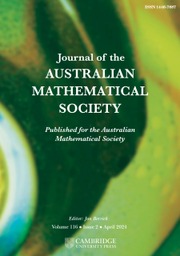Crossref Citations
This article has been cited by the following publications. This list is generated based on data provided by Crossref.
Lee, Sang-Un
2014.
The Chromatic Number Algorithm in a Planar Graph.
Journal of the Korea Society of Computer and Information,
Vol. 19,
Issue. 5,
p.
19.
Manta, Michael N.
2021.
Triangle colorings require at least seven colors.
Discrete Mathematics,
Vol. 344,
Issue. 7,
p.
112411.

